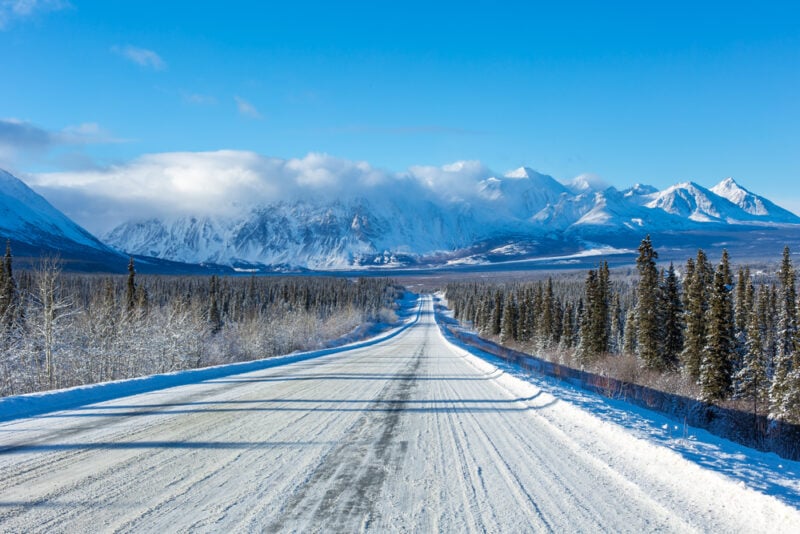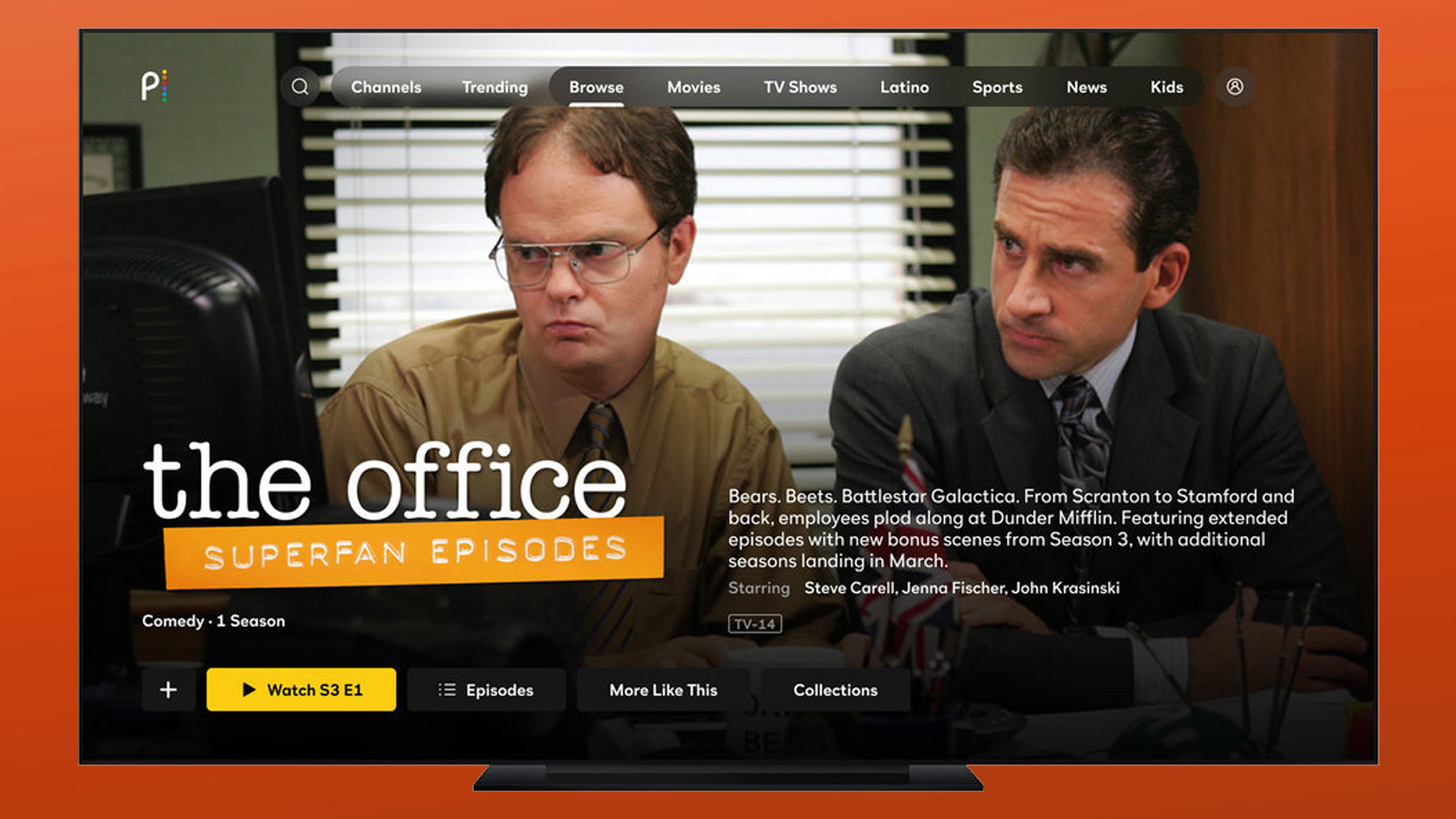When choosing a place to live, various factors come into play. From crime rates to education levels and infrastructure quality, each state offers a distinct living experience. As we enter 2022, it's crucial to be aware of the worst states to live in, as these regions may pose significant challenges in terms of crime, education, health, poverty, infrastructure, economy, and healthcare. In this article, we will explore the top ten worst states to live in, delving into the key areas that contribute to their rankings. Additionally, we will also highlight the five worst and best states for saving money, along with valuable tips on how to save money and reach your financial goals, especially in high-cost-of-living areas.
The Ten Worst States to Reside in 2022
Kentucky (#41 in overall ranking)
- Healthcare: 44
- Education: 36
- Economy: 40
- Infrastructure: 18
- Opportunity: 20
- Fiscal Stability: 48
- Crime & Corrections: 13
- Natural Environment: 29
Kentucky boasts one of the least stable fiscal situations in the country, largely owing to a $1.8 billion budget shortfall in 2021 resulting from the impact of the COVID-19 pandemic. Additionally, Wallethub recognizes Kentucky as one of the states with the highest poverty rates.
Kentucky also lags behind the national average in various health metrics, including low rates of childhood immunizations and elevated rates of preventable hospitalizations. America's Health Rankings reveals that a significant portion of the state's healthcare concerns stem from the behaviors of its residents. In terms of exercise and fruit and vegetable consumption, Kentucky ranks last in the nation, while simultaneously maintaining the second-highest smoking and sleep deprivation rates in the country.
South Carolina (#42 in overall ranking)
- Healthcare: 34
- Education: 44
- Economy: 18
- Infrastructure: 36
- Opportunity: 38
- Fiscal Stability: 31
- Crime & Corrections: 46
- Natural Environment: 26
The state grapples with one of the highest levels of violent crime, exhibiting the nation's fifth-highest homicide rate and a juvenile incarceration rate that surpasses the national average by 10%. Over the past few years, murder and aggravated assault rates in South Carolina have displayed a consistent upward trend, which is concerning despite a notable decline in the two decades preceding this period.
South Carolina's education system lags behind the national average in terms of K-12 performance measures and high school graduation rates (81% compared to the national rate of 85%). Quality Counts data demonstrates that the state experiences one of the most substantial gaps in educational quality between economically disadvantaged students and their wealthier counterparts. This discrepancy is especially noteworthy given South Carolina's high poverty rates, as it directly affects a significant portion of the state's student population.
Oklahoma (#43 in overall ranking)
- Healthcare: 48
- Education: 42
- Economy: 37
- Infrastructure: 21
- Opportunity: 26
- Fiscal Stability: 25
- Crime & Corrections: 44
- Natural Environment: 34
- Healthcare: 49
- Education: 41
- Economy: 41
- Infrastructure: 43
- Opportunity: 22
- Fiscal Stability: 14
- Crime & Corrections: 48
- Natural Environment: 30
- Healthcare: 22
- Education: 49
- Economy: 50
- Infrastructure: 40
- Opportunity: 43
- Fiscal Stability: 1
- Crime & Corrections: 49
- Natural Environment: 46
- Healthcare: 45
- Education: 47
- Economy: 38
- Infrastructure: 28
- Opportunity: 37
- Fiscal Stability: 22
- Crime & Corrections: 43
- Natural Environment: 37
- Healthcare: 47
- Education: 45
- Economy: 48
- Infrastructure: 50
- Opportunity: 18
- Fiscal Stability: 28
- Crime & Corrections: 23
- Natural Environment: 36
- Healthcare: 33
- Education: 50
- Economy: 44
- Infrastructure: 45
- Opportunity: 49
- Fiscal Stability: 35
- Crime & Corrections: 47
- Natural Environment: 31
- Healthcare: 50
- Education: 43
- Economy: 49
- Infrastructure: 48
- Opportunity: 44
- Fiscal Stability: 41
- Crime & Corrections: 33
- Natural Environment: 22
- Healthcare: 46
- Education: 48
- Economy: 47
- Infrastructure: 47
- Opportunity: 48
- Fiscal Stability: 42
- Crime & Corrections: 50
- Natural Environment: 49
- Establish specific savings targets. What are you saving for? Perhaps a down payment on a house, a new vehicle, or even retirement? Setting clear objectives will keep you motivated to save money.
- Create a budget. Utilizing a money-saving application can assist you in monitoring your income and expenses, enabling you to identify where your money is being spent. Once you have a clear understanding of your spending habits, you can start making necessary changes to increase your savings.
- Open a high-yield savings account. Currently, savings rates have reached unprecedented levels, making it increasingly possible to discover a high-yield savings account with an annual percentage yield (APY) exceeding 4.00%. By opening such an account, you can effortlessly earn additional income through your savings.
- Automate your savings. Set up automated transfers from your checking account to your savings account each month. By doing so, you won't even have to think about moving money around—it becomes a habit.
- Trim unnecessary expenses. Analyze your spending patterns in order to identify areas where you can cut back. Are you indulging in dining out excessively? Are you splurging too much on entertainment? Chances are there are areas where you can save money without compromising your quality of life.
- Explore opportunities to generate extra income. If you're serious about saving money, you may need to find ways to supplement your earnings. This could involve advocating for a raise at work, seeking new employment, securing a part-time job, or embarking on a side hustle.
- Invest your money. Once you have accumulated some savings, allocating a portion of it towards investment is key. This is the foundation of wealth creation, as the power of compound interest enables your money to grow over time.
- Focus on your three most substantial expense categories. When living in a high-cost-of-living area, making intelligent decisions regarding housing, transportation, and food expenses can result in greater savings compared to merely giving up those $5 lattes.
- Take advantage of complimentary or low-cost activities. Almost every town and city in the United States offers free or affordable activities. This could include utilizing the local library, visiting nearby parks, taking advantage of free museum days, or embarking on hikes.
- Opt for public transportation. Opting for public transportation instead of driving can save you money on fuel and parking expenses—and potentially eliminate the need for a monthly car payment if you decide to sell your vehicle. You could also consider carpooling, walking, or biking if it suits your circumstances.
- Cook meals at home more frequently. Dining out regularly can quickly accumulate costs, particularly in major cities. By cooking your own meals at home, you can save a considerable amount of money. Not adept in the kitchen? Borrow cookbooks from your local library, watch cooking tutorials on YouTube, or enroll in a cooking class.
- Seek a roommate. If your living space permits, consider finding one or two roommates to share the costs of rent and utilities. It doesn't have to be a permanent arrangement, but it can be a temporary solution to reduce one of your most significant expense categories—housing.
- Negotiate your bills. Many businesses are open to negotiations, especially if you have been a loyal customer or are facing financial difficulties. Don't hesitate to negotiate various expenses, from rent to your phone bill.
- Take advantage of discounts available to seniors, students, military members, medical professionals, and teachers. Numerous establishments offer discounts to these specific groups, so make sure to seize these opportunities if you qualify.
- Consider relocating to a less expensive area. If you have no compelling reasons to stay in your current location—and are open to moving—relocating to a state with a lower cost of living can significantly reduce your expenses. Planning a move? Utilize a cost of living calculator to determine how much income you would need to maintain your current standard of living in a new city.
Oklahoma residents encounter some of the lowest levels of healthcare access in the nation. One-fifth of individuals aged 19 to 64 within the state lack insurance coverage, while 14.6% reported forgoing healthcare services due to cost. Additionally, the state grapples with some of the highest rates of non-medical drug use, as well as the second-lowest rates of exercise and vegetable consumption.
Regarding crime, Oklahoma ranks 16th in terms of the highest murder rate nationally and has witnessed an increase in violent offenses. Furthermore, the state boasts the second-highest rate of incarceration in the country, with 639 out of every 100,000 individuals behind bars.
Arkansas (#44 in overall ranking)
Access to healthcare, particularly dental care, remains among the lowest in the nation for Arkansas. Residents experience the lowest rate of dental visits, while 12.9% report avoiding healthcare due to cost constraints. The state also exhibits the second-highest rates of tobacco use and cardiovascular disease in the nation, as per America's Health Rankings.
Arkansas secures the fourth-highest incarceration rate nationwide, with 586 individuals out of every 100,000 incarcerated. The state furthermore faces the fourth-highest incidence of violent crime. The convergence of high poverty rates, economic hardships, and low educational attainment likely contributes to the elevated crime rates observed within the state.
Alaska (#45 in overall ranking)
Alaska's economy holds the 50th position in the nation, reflecting a decline from its 46th rank in the 2019 rankings. The state's heavy reliance on oil and tourism, heavily impacted by the COVID-19 pandemic, has been a major contributing factor. The Alaskan Department of Labor data demonstrates that Alaska's job growth, unemployment rate, and wage growth trail the national average. Nevertheless, the state did experience better job growth than the national average during the fourth quarter of 2021.
In terms of crime, the National Institute of Justice defines violent crimes as those involving murder, rape, sexual assault, robbery, or aggravated assault. Although Alaska's homicide rate aligns with the national average, it leads the nation in terms of violent crime rates, as indicated by America's Health Rankings.
Alabama (#46 in overall ranking)
The state has made some progress in its education system when compared to its 2019 ranking of 50th. Education Weekly's Quality Counts analysis assigns the state a D grade, highlighting lower student performance levels and adult outcomes. Although some improvements have been witnessed in early childhood education, the overall progress falls short of the national average.
Alabama's healthcare system fails to measure up to most of the nation due to limited access to medical providers. America's Health Rankings ranks the state 49th in terms of overall health outcomes, pinpointing the lowest provider accessibility level nationwide. Moreover, rates of depression, obesity, diabetes, and chronic kidney disease in Alabama surpass the national average.
West Virginia (#47 in overall ranking)
The state's infrastructure holds the worst position nationwide, with nearly a third of West Virginia's roads deemed to be in poor condition. Infrastructurereportcard.org assigns West Virginia a grade of D, indicating that the state's systems are at risk, with many elements approaching the end of their service life.
New Mexico (#48 in overall ranking)
New Mexico's education system claims the last position in the nation, with the EdWeek Research Center evaluating the state's public schools as the worst nationwide. The state exhibits the lowest fourth-grade reading levels in the country. Only 75% of New Mexican students graduate from high school, significantly lower than the national average of 85.8%.
Opportunity metrics in the state remain low, with a poverty rate of 17%. Moreover, 26% of children in New Mexico live at or below the poverty line, which represents the highest level of childhood poverty in the country.
Mississippi (#49 in overall ranking)
Mississippi ranks last in terms of healthcare due to limited access and poor health outcomes. Nearly one-fifth of the state's residents lack health insurance. Additionally, 14% of residents report avoiding seeking medical care due to cost concerns. Mississippi also claims the highest obesity rate in the nation, with 38.7% of the population being classified as obese. The state also leads the nation in terms of infant mortality, cesarean deliveries, preterm births, and low birth weight.
Mississippi ranks the worst in terms of the Economic Hardship Index according to America's Health Rankings. The poverty level in Mississippi is nearly 19%, and per capita income in the state stands at $25,300, the lowest in the nation. The state also faces high levels of unemployment and food insecurity.
Louisiana (#50 in overall ranking)
Crime and the state's criminal justice system remain significant issues in Louisiana. The state ranks first in the nation for homicides, with 15.8 murders for every 100,000 individuals, well surpassing the second-highest rate held by Missouri at 11.8 homicides per 100,000. Additionally, the state claims the highest incarceration rate in the nation, with 680 incarcerated individuals for every 100,000 residents.
Opportunity and education in Louisiana also rank among the lowest in the nation. The state faces the highest poverty rates, with 19% of the population living at or below the poverty line. Moreover, Louisiana's school spending ranks the lowest nationwide, as do performance measures for 4th and 8th-grade reading and math skills.
South Carolina - Crime, Education Level
Next up on the list is South Carolina, which is highly recognized for its deficiencies in education and alarming crime rates. The state's educational system falls below the national average in terms of high school graduation rates and K-12 performance measures (81% compared to 85%).It is also known for having the most severe poverty gap, exacerbating the disparity in educational opportunities between affluent and underprivileged students.
South Carolina ranks among the states with the highest levels of violent crimes, with the country's 5th highest homicide rate and a 10% higher rate of juvenile incarceration than the national average. Assault and murder rates have been steadily increasing since 2016.

New Mexico - Education, Health, Poverty Level
New Mexico is one of the most challenging states in the United States, primarily due to its education and opportunity metrics. The state's education system ranks at the bottom of the national rankings.According to EdWeek Research Center, the state's public schools are rated as the worst in the entire nation. Less than 75% of students in New Mexico graduate from high school, a figure significantly lower than the national average of 85.8%.
New Mexico has a high poverty rate, standing at 17%, resulting in low opportunity metrics. Moreover, approximately 26% of children in the state live below the poverty line, which is the highest rate in the country.

West Virginia - Infrastructure, Economy, Healthcare
West Virginia, another state that ranks poorly for quality of life, is significantly hindered by its struggling economy, inadequate infrastructure, and subpar healthcare statistics.The state's infrastructure is among the most dilapidated in the entire country, with approximately one-third of its roads in poor condition. According to Infrastructuredreportcard.org, West Virginia's overall infrastructure receives a grade of D, indicating that many elements of the state's systems are at risk, with many components nearing the end of their useful life.

5 Worst States for Saving Money
1. Hawaii
According to analysis by Forbes Advisor, Hawaii has the highest cost of living out of all 50 states and the District of Columbia, putting a strain on the finances of many residents. Hawaii also holds the highest debt-to-income ratio as of Q3 2022, at 2.25, indicating that the debt of many Hawaiians exceeds their income. (A ratio of 1.0 would indicate equal debt and income.)
Furthermore, Hawaii ranks eighth highest in terms of food scarcity based on the three most recent Household Pulse Surveys conducted by the U.S. Census Bureau. These surveys found that 13.1% of households in Hawaii reported experiencing inadequate food supply at least some of the time in the past seven days. This can be attributed to the high cost of food in Hawaii, which stems from the state's isolation and heavy reliance on imported goods. Consequently, Hawaii is also considered one of the least desirable states for retirement.
Housing expenses in Hawaii are also among the highest in the nation, with the second-highest percentage of income spent on housing at 24.96%. This can make it challenging for residents to allocate funds for other essential expenses or savings.
2. California
California follows as the second-worst state for saving money due to its exorbitant cost of living. In 2021, residents of the Golden State spent a staggering 25.58% of their income on housing, the highest percentage nationwide. This can mainly be attributed to the state's expensive real estate market, driven by high demand and limited supply.
Additionally, California has the fourth-highest percentage of renters (27.57%) who spend at least 50% of their income on rent. These high housing costs have resulted in California ranking 15th in terms of the percentage of people struggling to make ends meet.
According to Census Bureau surveys conducted in early 2023, an average of 40.50% of households in California reported finding it somewhat or very difficult to cover day-to-day expenses within the last seven days.
3. Maryland
Despite its reputation for high-income jobs, Maryland's cost of living and tax burden make it difficult for residents to save and achieve financial stability.
Maryland ranks as the seventh most expensive state to live in out of all 50 states and Washington, D.C., making it challenging for residents to make ends meet. High housing costs are a significant contributing factor, with Maryland having the 10th highest percentage of renters (25.51%) who spend at least 50% of their income on housing.
Moreover, Maryland residents have the third-highest debt-to-income ratio, indicating that their debt levels are higher relative to their income compared to most other states. This makes saving money challenging and keeps residents trapped in a cycle of financial insecurity.
The state's effective income tax rate also plays a role in its ranking as one of the worst states for financial well-being. Maryland has the seventh-highest income tax rate in the nation, at 12.83%, which reduces the amount of disposable income available for saving and investment.
4. New York
Financially speaking, New York is considered one of the worst states to reside in. With the fifth-highest cost of living in the country, the state's high housing costs put a strain on many residents' finances. New York ranks third for the percentage of residents spending at least 50% of their income on rent (27.66%) and sixth for the percentage of income spent on housing (23.11%).
To compound matters, the median household income in the state only increased by 9.54% between 2018 and 2021, which is the 13th lowest increase compared to all 50 states and Washington, D.C. This means that residents are facing rising living costs without a proportional increase in earnings.
Beyond housing costs, New Yorkers also face challenges. While the state ranks 19th in terms of the percentage of people struggling to pay for daily expenses, an average of 39.33% of households reported difficulties in purchasing everyday items within the past seven days. This makes New York one of the least desirable states for saving money.
5. New Jersey
The Garden State may offer natural beauty and convenient access to major cities, but it is also considered one of the worst states for financial well-being. With the 15th highest cost of living nationwide, some residents in New Jersey may struggle to maintain their budgets.
However, it's not just the cost of living that makes saving money challenging in this state. New Jersey claims the highest effective property tax rate in the nation, at 2.26%. Homeowners in the state can expect to pay a considerable sum in property taxes each year, adding to overall living expenses.
Housing costs pose yet another obstacle for New Jersey residents. The percentage of income spent on housing is 22.50%, the seventh-highest in the nation. Additionally, 26.28% of residents spend at least half of their income on rent, also the seventh-highest percentage in the country. These high housing costs make it challenging for individuals and families to set aside funds for savings.
Lastly, while the median household income in New Jersey increased by 9.24% between 2018 and 2021, it was still the 11th lowest increase out of all 50 states and Washington, D.C. This slow income growth makes it difficult for some residents to keep up with the rising cost of living in the state.
5 Best States for Saving Money
On the opposite end of the spectrum are the five best states for saving money: North Dakota, South Dakota, West Virginia, Missouri, and Ohio. Let's examine the factors that contributed to each state's ranking.1. North Dakota
North Dakota takes the top spot as the best state in the U.S. for saving money. With the country's third-lowest debt-to-income ratio and the second-lowest percentage of income spent on housing costs and rent, North Dakotans are able to retain more of their income.
Furthermore, the Peace Garden State boasts the ninth-lowest effective income tax rate, sitting at just 8.13%. This allows residents to maximize the funds available for their savings goals.
Despite the cost of living, which ranks in the middle (27th place), North Dakota residents report minimal difficulties paying for typical household expenses and have scarce issues with food availability.
2. South Dakota
Following closely behind North Dakota is its neighboring state, South Dakota, which offers many of the same financial advantages.
Affordable housing costs contribute to South Dakota's status as one of the best states for saving money. The state has the lowest percentage of residents spending at least half of their income on rent (15.11%) and the third-lowest percentage of income spent on housing costs (16.22%) among all residents. This means that individuals can enjoy affordable housing payments and have more funds left over for other expenses.
Although South Dakota's cost of living is not the lowest, it ranks 15th lowest for the average percentage of residents experiencing difficulty paying for household expenses (35.37%) and 13th lowest for the percentage of households reporting food scarcity (9.30%) in 2023. Hence, fewer households in the state struggle to cover bills, and the majority have sufficient access to food.
South Dakota also ranks fourth lowest in terms of effective income tax rate, lower than North Dakota. However, it ranks 19th highest for effective property tax rate.
3. West Virginia
Despite the economic challenges brought forth by the pandemic, West Virginia remains one of the best states for saving money.
With the ninth-lowest cost of living in the nation, the Mountain State provides an affordable place to call home and secure financial savings. In fact, West Virginia has the lowest percentage of income spent on housing costs among all states, standing at 15.10%, allowing residents to save more of their hard-earned income.
When it comes to income taxes, West Virginia boasts the 14th-lowest effective tax rate, which stands at 9.34%. For individuals with a median income of $28,989, the tax payment amounts to only $2,709.
Additionally, the state has relatively low real estate taxes, with an effective property tax rate of 0.59%, ranking it as the 10th lowest rate in the country.
However, despite the comparatively low cost of living and tax burden, West Virginians still face economic difficulties. Nearly 46% of households reported struggling to pay for household expenses in the first three months of 2023, and 13% of households experience food scarcity in the state.
4. Missouri
Missouri, also known as the Show-Me State, ranks as the sixth-lowest state nationwide in terms of cost of living. This makes it an attractive destination for those wishing to save money.
One of the most significant expenses for many individuals is housing, and Missouri brings good news in that regard. It ranks ninth lowest in terms of the percentage of income residents spend on housing costs, with only 17.75% of income dedicated to housing expenses.
For renters, Missouri ranks 17th lowest for the percentage of people who spend at least half of their income on rent, at 20.54%.
When it comes to income taxes, Missouri ranks 19th lowest with an effective tax rate of 10.05%. For those with a median individual income of $36,036, income tax amounts to only $3,623.
5. Ohio
Ohio presents itself as a state where substantial savings can be achieved. It boasts the 12th lowest cost of living nationwide, making it an affordable place to call home.
As of Q3 2022, the state also ranks as the sixth lowest for residents' debt-to-income ratio, at 1.162. This means that Ohioans have relatively low debt levels compared to their income.
Additionally, Ohio ranks eighth lowest for the percentage of income spent on housing costs (17.62%) and 13th lowest for the percentage of residents spending at least half of their income on rent (20.34%). The state also scores well in the income tax metric, ranking eighth lowest with an effective income tax rate of 7.97%.
However, food scarcity is relatively high in Ohio, with the state ranking 12th highest in this regard. On average, 12.80% of Ohioan households reported experiencing inadequate food supply within the past seven days, either "sometimes" or "often," based on surveys conducted in January, February, and March 2023. Nevertheless, Ohio remains one of the best states for saving money.
How To Cut Costs and Achieve Your Financial Objectives
Saving money plays a crucial role in financial planning. It enables you to realize your aspirations of purchasing a house, retiring with ease, or launching a business. Regardless of your specific ambitions, here are some recommendations for saving money so you can attain them:
How To Economize in a High-Cost-of-Living Region
Residing in an area renowned for its high cost of living can present challenges to your budget. However, there are several measures you can take to reduce expenses while still maintaining a comfortable lifestyle.
In conclusion, while every state has its unique challenges, it is crucial to be aware of the worst states to live in 2022. States such as South Carolina, New Mexico, and West Virginia struggle with various issues across crime rates, education levels, health, poverty, infrastructure, economy, and healthcare. Nevertheless, let us not forget that there are also states that offer better opportunities for saving money, ensuring a stable financial future. Whether you reside in a high-cost-of-living area or not, taking control of your finances and learning how to save money is vital for attaining your financial goals. By staying informed, making smart decisions, and prioritizing savings, you can make your current state of living work for you, no matter its drawbacks.





